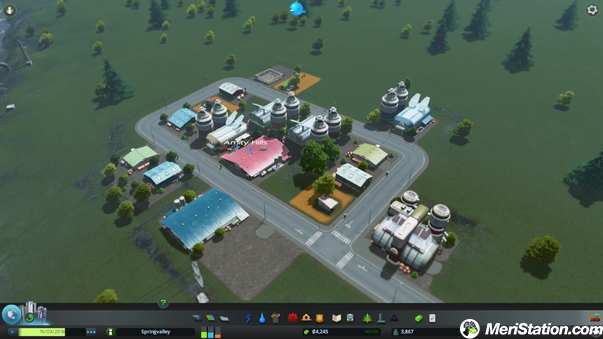Cities: Skylines is a new urban management title, developed by Colossal Order . Despite the similarity between their titles, we are faced with a product that is not related at all to the series Cities of Monte Cristo Multimedia … Well, except in the fact that they share the same theme. In fact, the game we are analyzing today comes from a different saga,
Cities in Motion. On this occasion, the company has decided to stop focusing solely on urban traffic management to extend the simulation options, putting in our hands the control of a complete city. We are facing a title quite similar to most offers of the same genre,
but do not expect a game traced to Sim City , or the recent Cities XXL . In Cities: Skylines we will find some new and original mechanics, which are quite interesting.
Cities: Skylines proposes us to build a city from scratch, for which we will have to choose one of the different maps that it offers us. For each of them, we find different descriptive characteristics: Percentage of buildable land, existence of potable water, fuel, wood, …
These last aspects will influence the type of industry that we can develop during the first steps of the growth of our city.
All the initial maps have a road that communicates the space available for construction with the exterior. In this way, all the games begin by creating a
road network that connects what will later be our town with the rest of the world. And once this is done, we can begin the process of developing a city that suits us.
We can build roads of different types: Routes of one, two or more lanes, in two directions or one way. Some types of roads have adjacent decorations, such as tree walks, and curved sections can also be designed. Obviously, the more strokes and more complex, the higher will be the maintenance expense related to roads. Any building that wants to be built must have access from one of
these roads, except in some specific cases such as water supplies or wind turbines. In this way, when building a road, a grid will be shown in the areas
adjacent to it, occupying the right place to lift the different buildings that we have … And bearing in mind that they are not all available from the beginning:
Using the standard popularized by Sim City, the game makes use of the green-blue-yellow trio to identify the different zones to be built:
Residential, commercial and industrial, respectively. In addition to these possibilities, we can build another series of elements such as police stations, fire stations,
hospitals, schools, public transport, parks, … These buildings serve to meet the needs of citizens in different aspects of their daily lives, as security, education, health or leisure.
As we said before, we also have to take charge of the power generation plants, supply and channeling of clean and dirty water, garbage collection.
Three bars at the bottom of the screen, on the interface panel, will show us the demand for construction of the three main areas mentioned,
Cities: Skylinestakes into account aspects such as the wind or the direction of the water, so we will have to think about them when we go to build supplies,
discharges and generators of wind energy. If we make the mistake – for example – of pouring the dirty water upstream of the supply, we will be providing our neighbors with contaminated water. In fact, pollution -both acoustic,
atmospheric or water- will be aspects to take into account during the construction of the city, keeping residential areas away from the nuclei of pollutants, such as busy roads, factories or landfills. The environment is also important, and our citizens will prefer to live near parks, in avenues full of trees and close to basic services.

